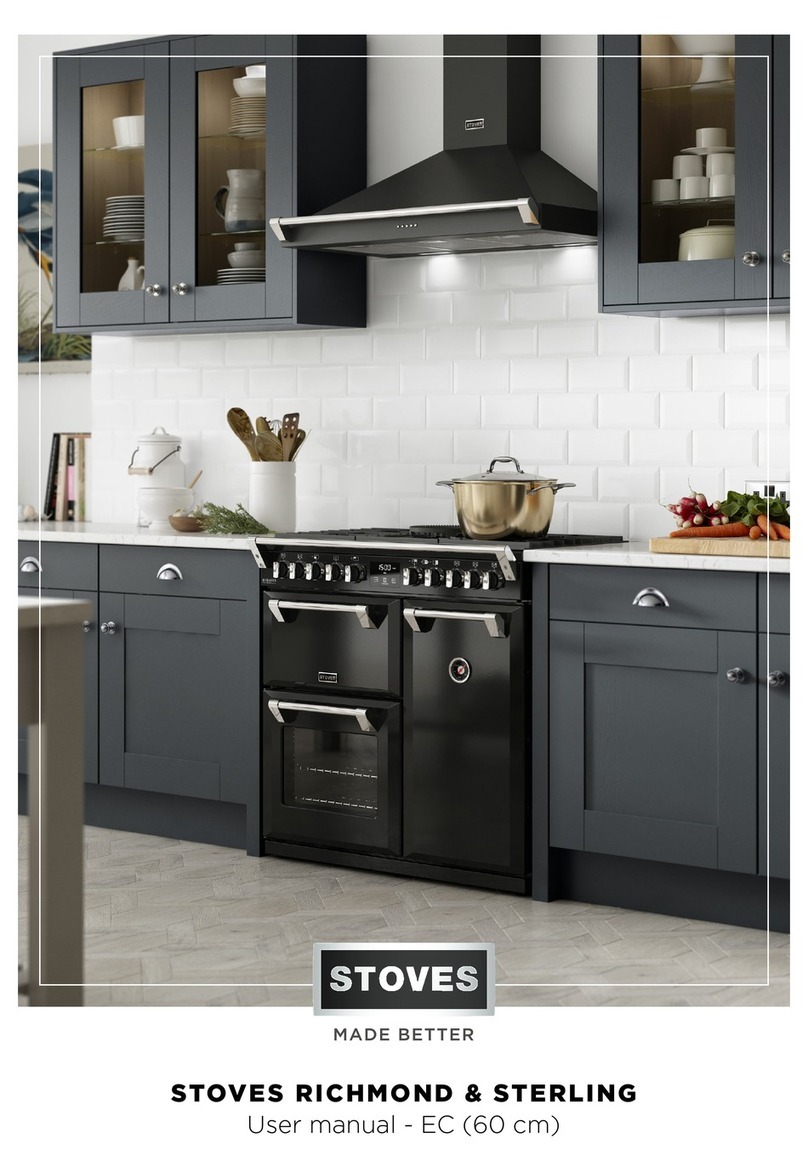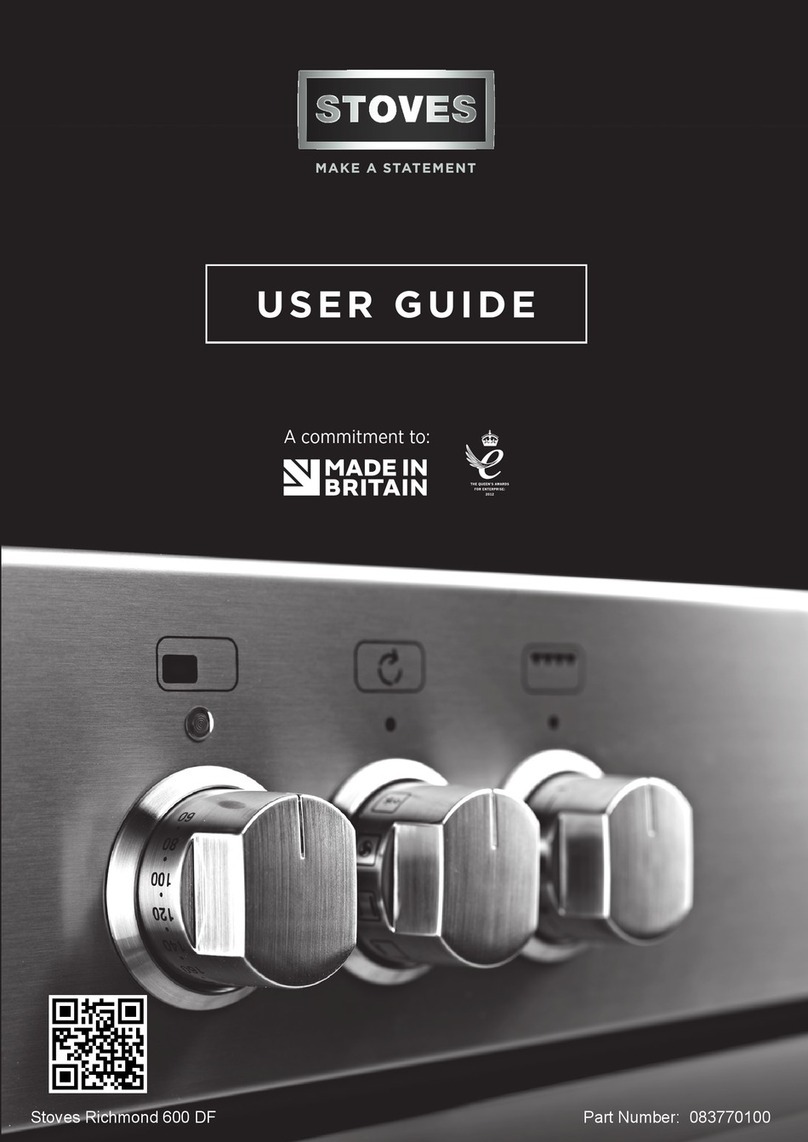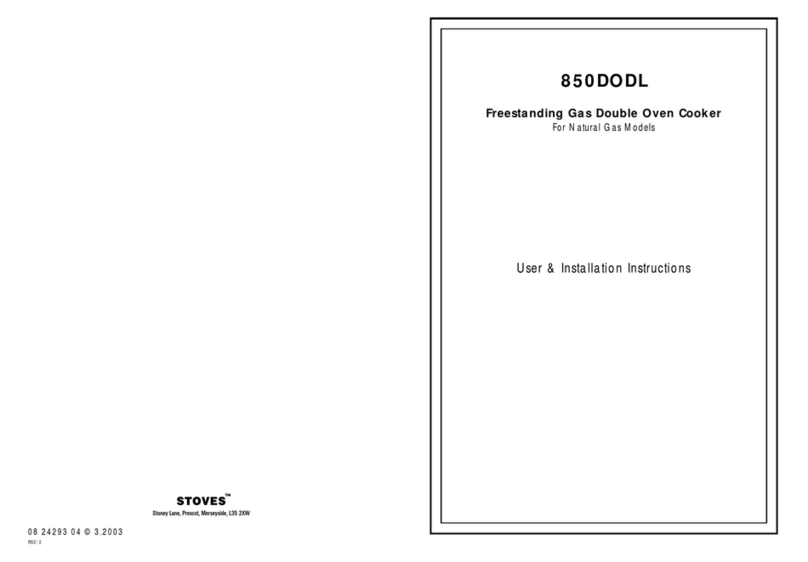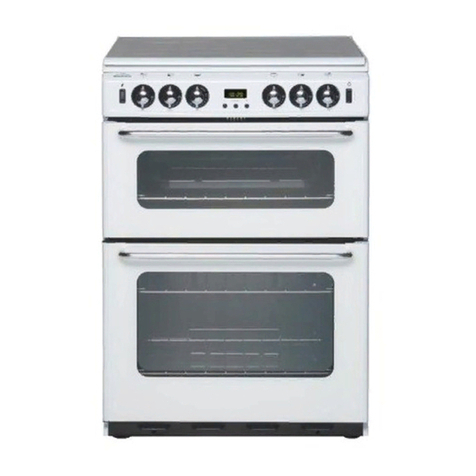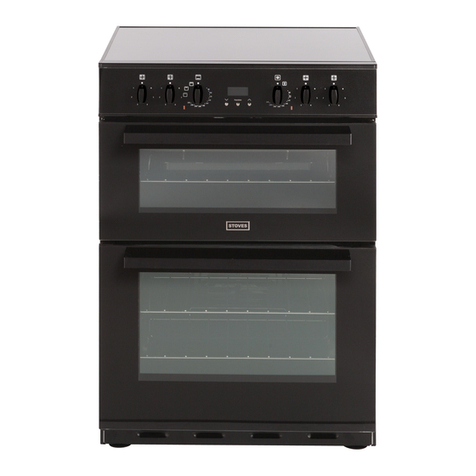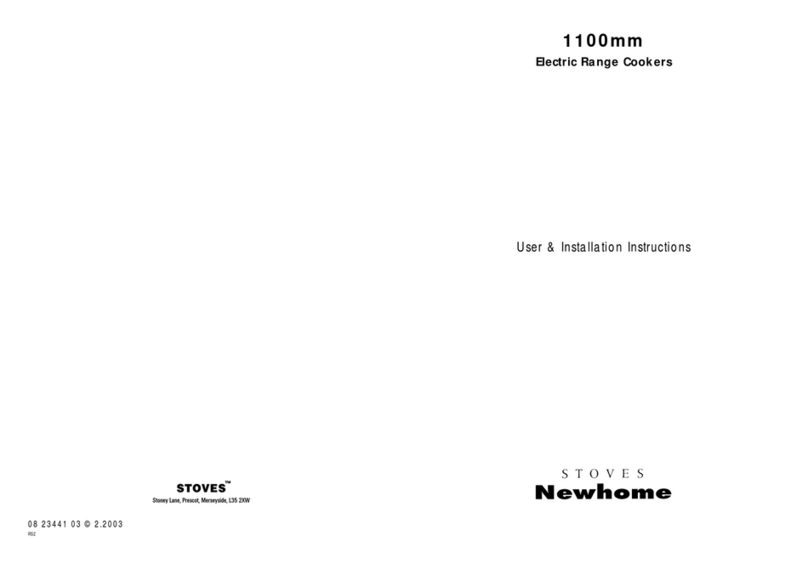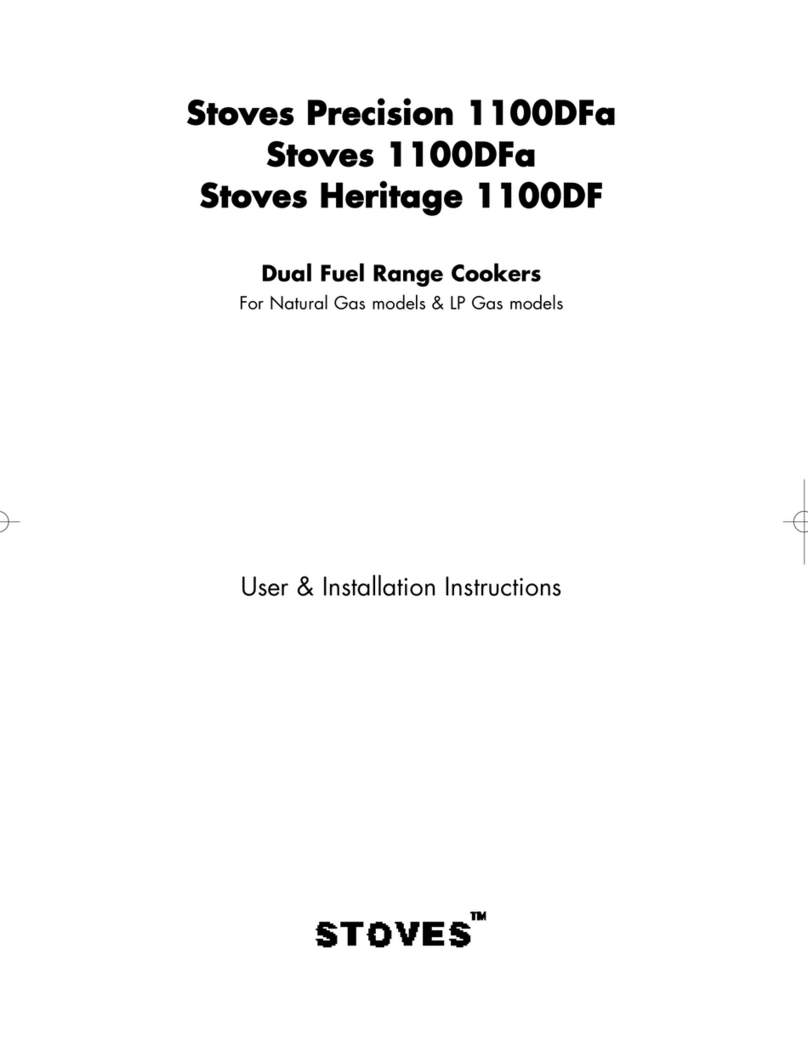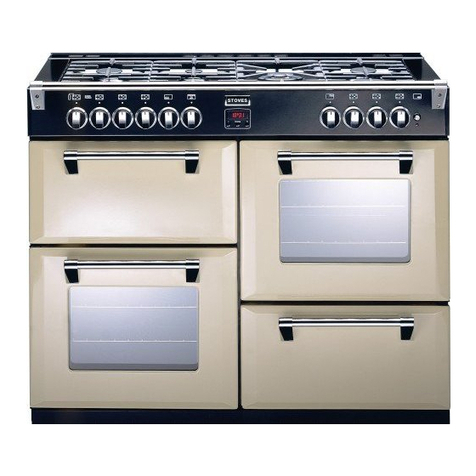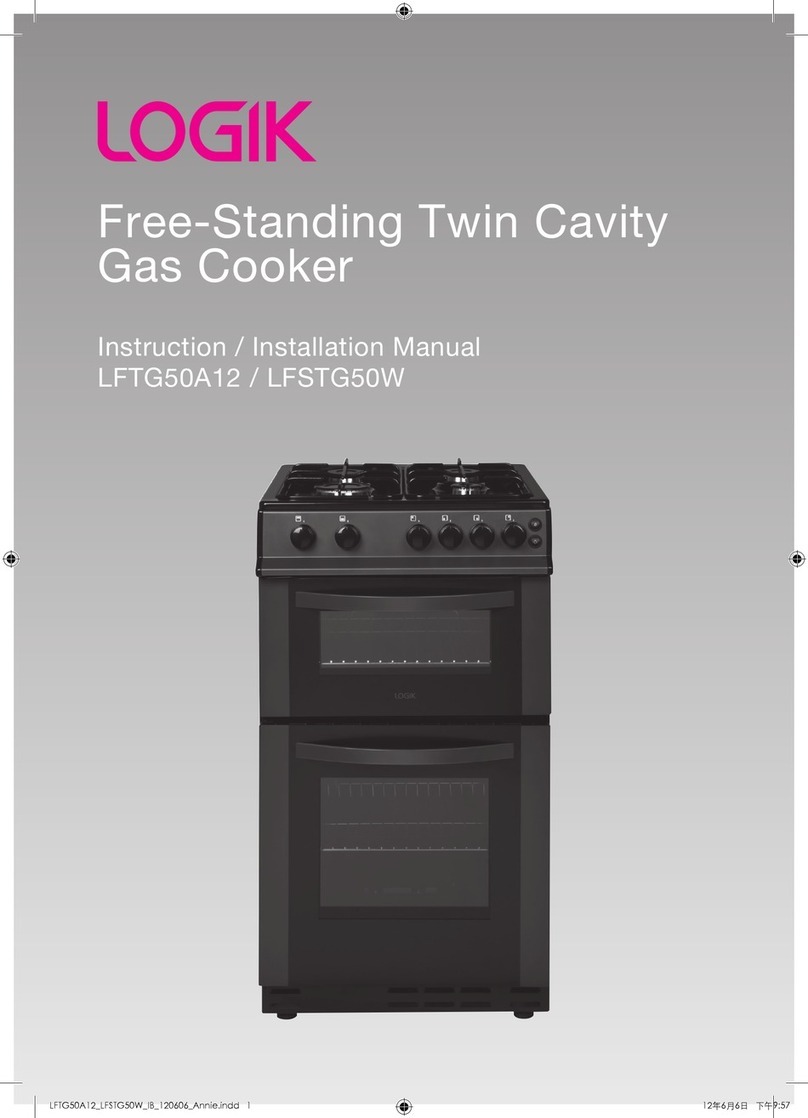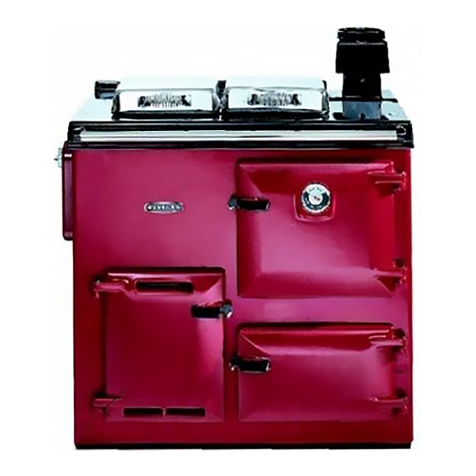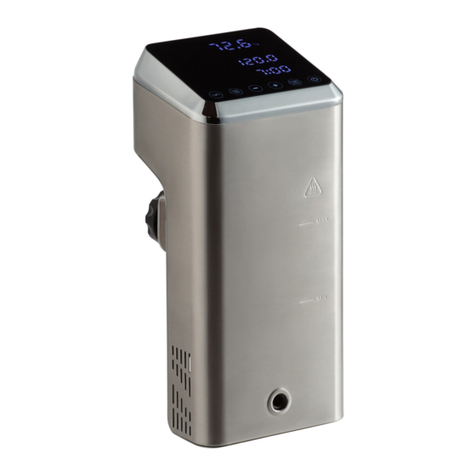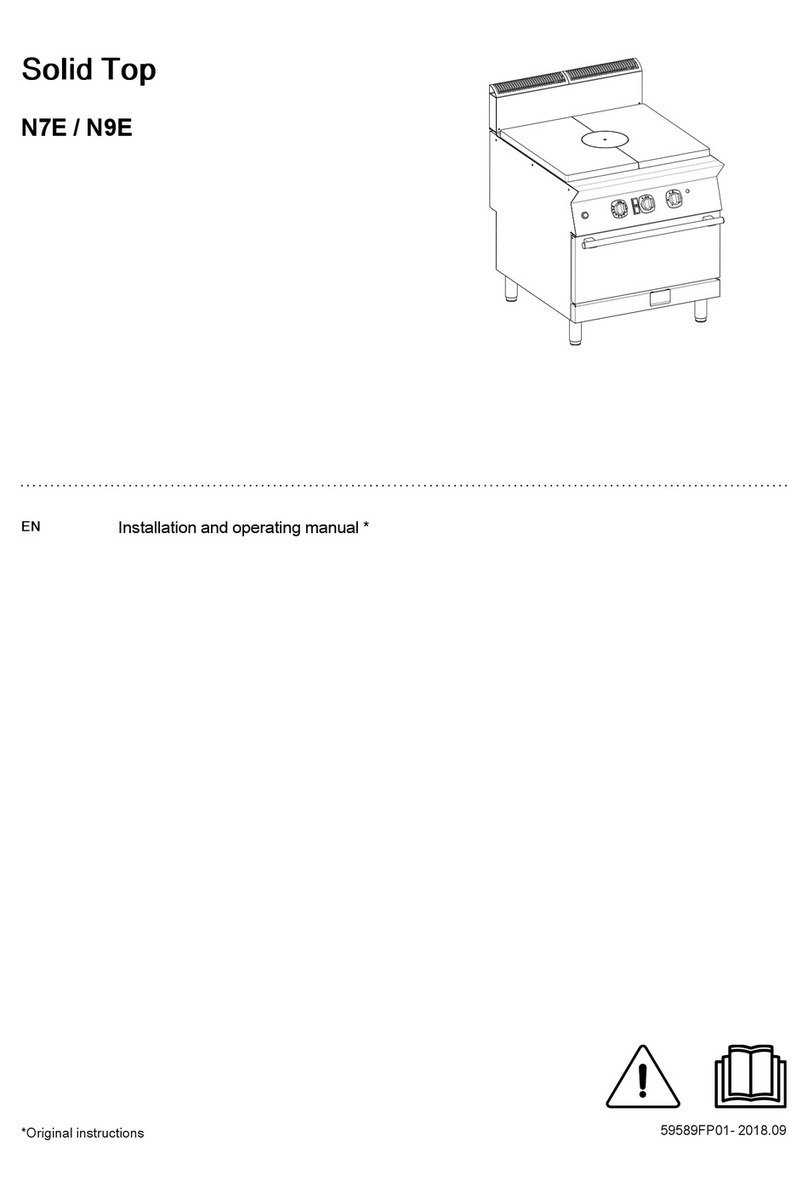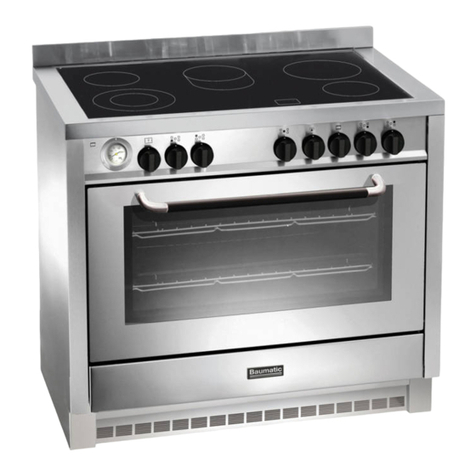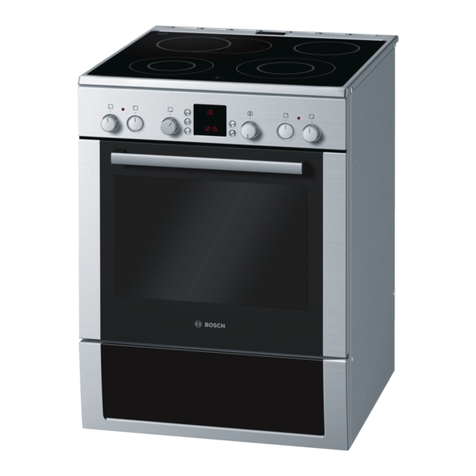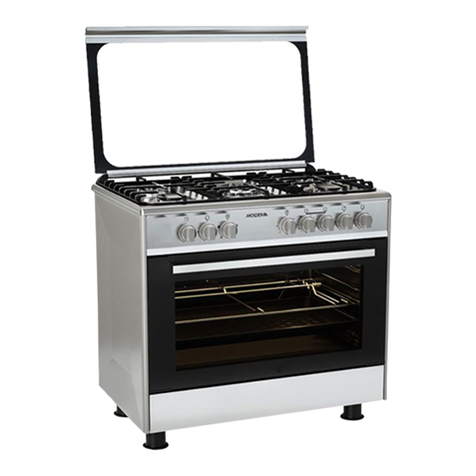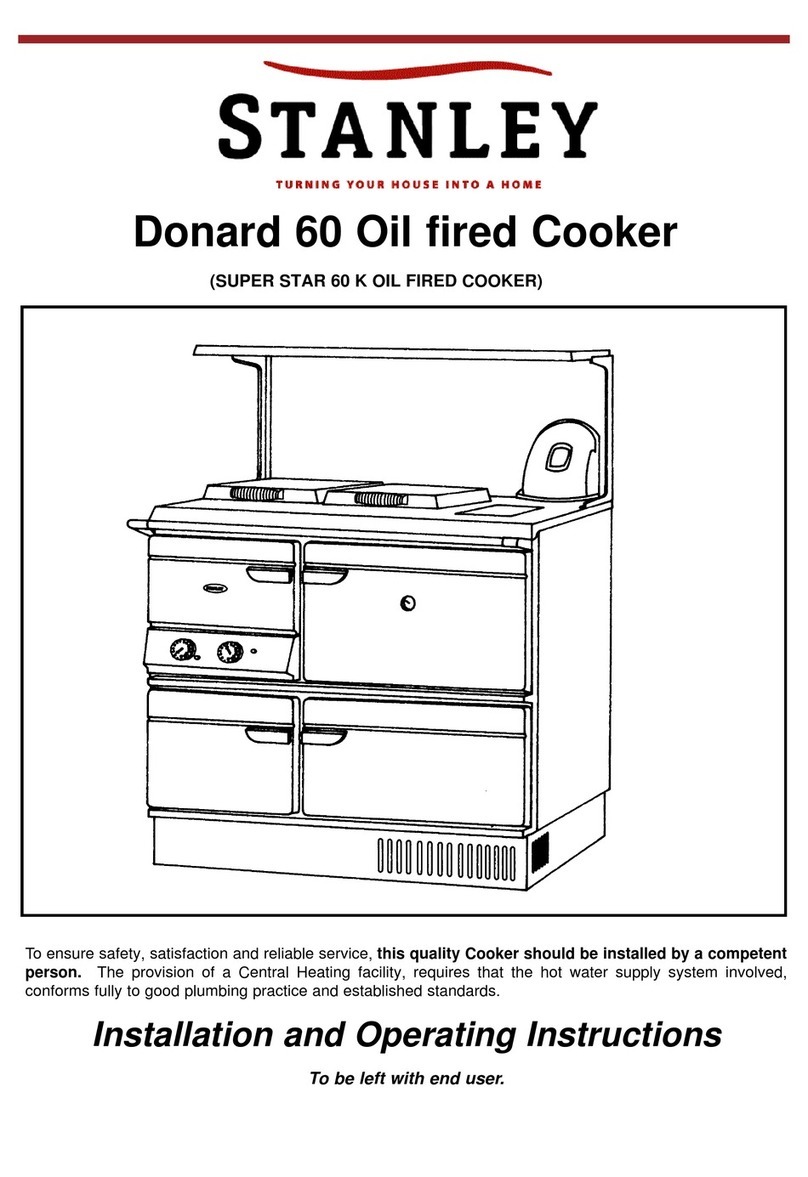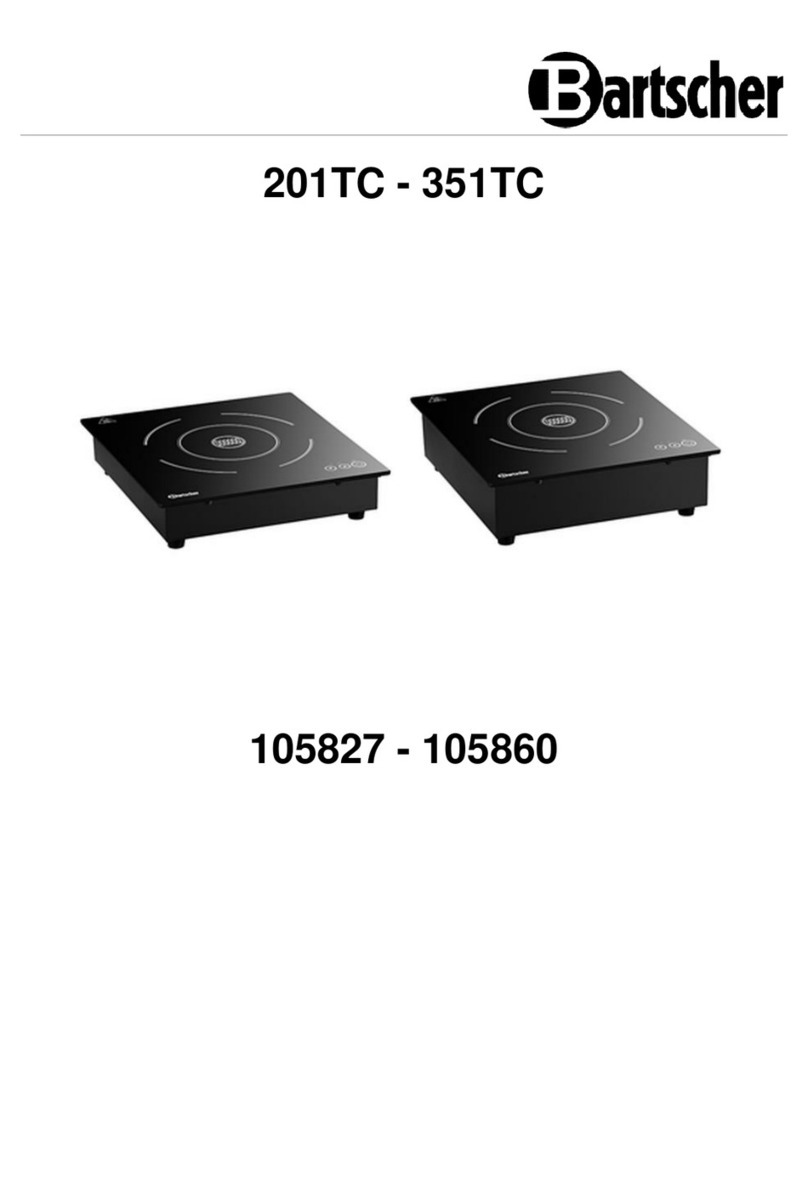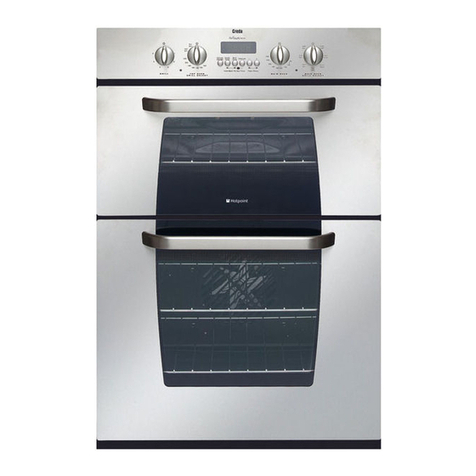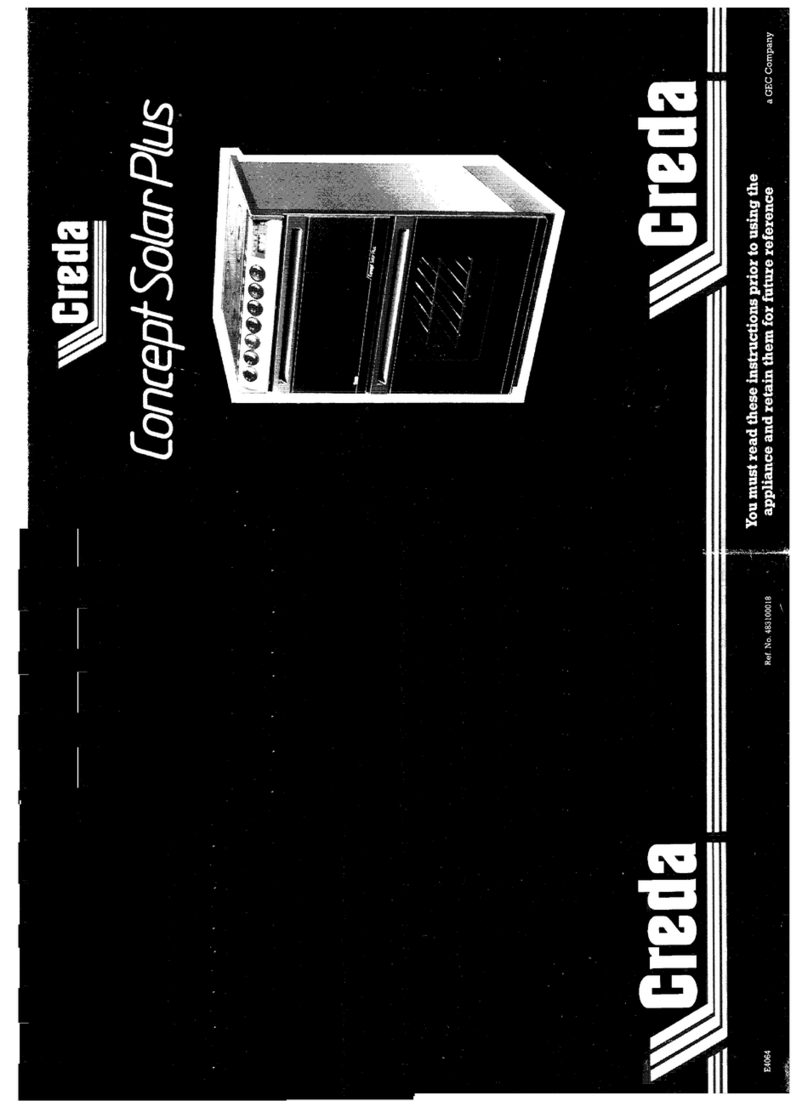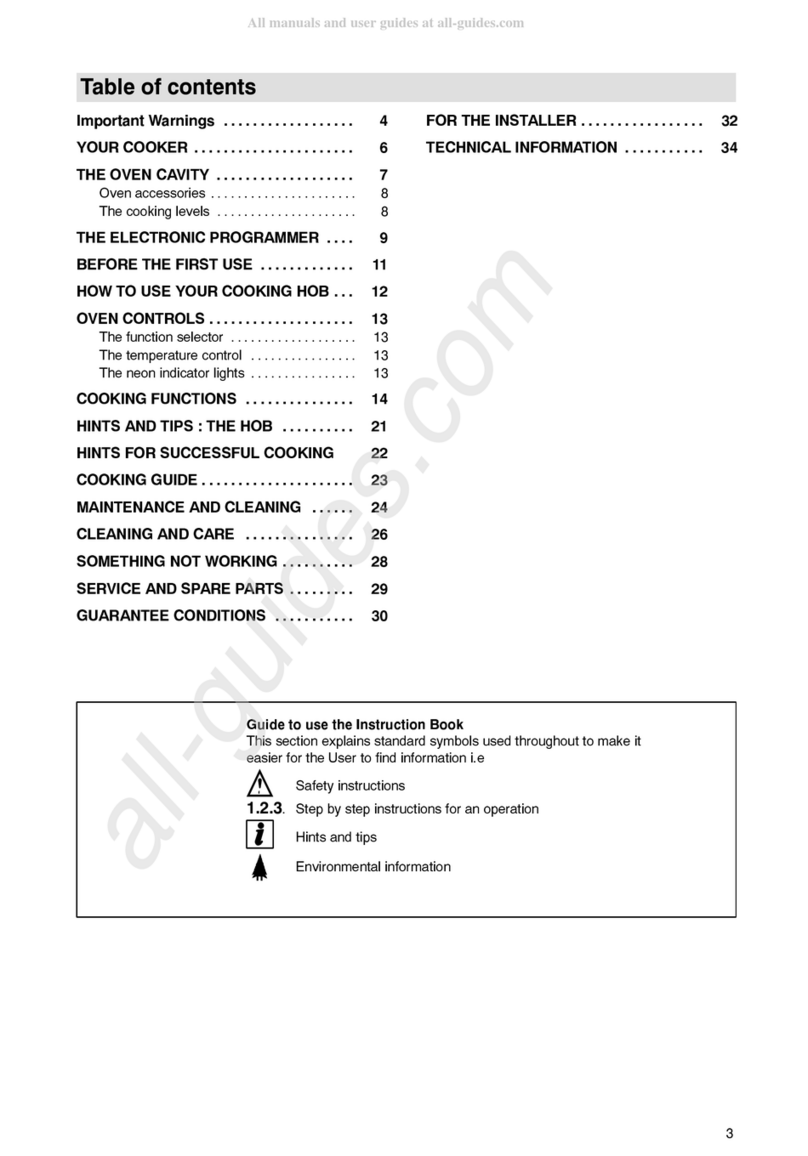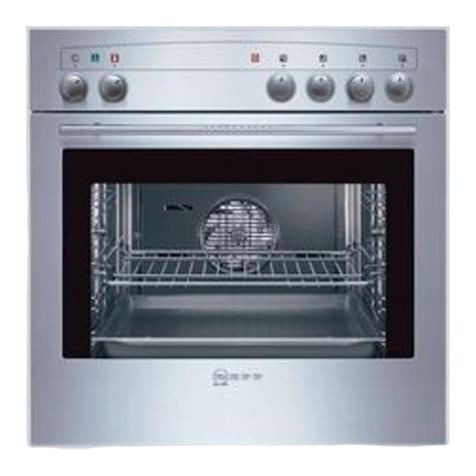Thank you for choosing a British
built appliance by Stoves.
We hope that the following
information will help you to quickly
familiarise yourself with the features
of the appliance, and to use it
successfully and safely.
Our policy is one of constant
development and improvement. Strict
accuracy of illustrations and specifications
is not guaranteed. Modification to
design and materials may be necessary
subsequent to publication.
This cooker may be sited with cabinets
on both sides, or it may be free
standing. Sufficient space should be
allowed at either side of the cooker to
enable it to be pulled out for cleaning
and servicing.
Please read the instructions in this
handbook before using or installing
this appliance. All installation and
servicing work must be carried out by
a competent person.
Your 1st Year Guarantee
To fulfil the conditions of your guarantee,
this appliance must be correctly
installed and operated, in accordance
with these instructions, and only be
used for normal domestic purposes.
Please note that the guarantee, and
Service availability, are only available
in the UK and Republic of Ireland.
Moving the cooker
Do not attempt to move the cooker by
pulling on the doors or handles. Open
the oven or grill door and grasp the
frame of the cooker, taking care that
the door does not shut on your fingers.
Take care to avoid damage to soft or
uneven floor coverings when moving
the appliance. Some cushioned vinyl
floor coverings may not be designed
to withstand sliding appliances without
marking or damage.
Before using the appliance for the
first time, remove any protective polythene
film and wash the oven shelves and shelf
runners in hot soapy water to remove
their protective coating of oil. Even so,
when you first turn on the oven or grill
you may notice a smell and some smoke.
Glass door panels
To meet the relevant Standards of
Domestic cooking appliances, all the
glass panels on this appliance are
toughened to meet the fragmentation
requirements of BS3193. This ensures
that, in the likely event that a panel
breaks, it does so into small fragments
to minimise the risk of injury.
Please take care when handling, using
or cleaning all glass panels, as any
damage to the surfaces or edges may
result in the glass breaking without
warming or apparent cause at a later
date. Should any glass panel be dam-
ages, we strongly recommend that is is
replaced immediately.
2
INTRODUCTION

